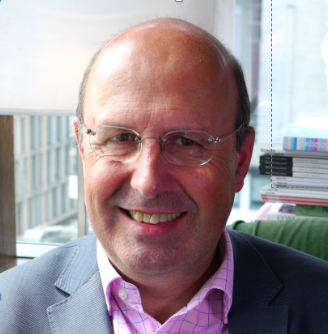You can sign up to our LinkedIn newsletter here
As you start to engage with potential clients beyond your immediate network, you need to find a way of pitching your value to people who don’t already know you. You may be recommended, introduced or just connected on LinkedIn. How do you start that first conversation with someone who you don’t really know?
First Contact
Sales professionals talk about a ‘sales model’. This is just jargon for the stages you take a potential client through to enable them to buy from you. The sales model that I believe is most effective is a three-stage process that starts with a 15-minute phone call. Prior to this you will have had some interaction, may be extended, by e-mail or direct messaging stimulating interest. But this call is your first opportunity to make contact in person.
We ask the potential client for just 15 minutes to minimise their initial commitment. In practice, we set aside 30 minutes because we hope that the conversation will go well. In the first 15 minutes we are trying to uncover whether our client has needs that we can fulfil. We start by building rapport with them by finding points of common experience. We then use a very structured approach that will give them an opportunity to share with us. We want them to be talking about what is challenging them and we want those challenges to be challenges we could help them with.
Drawing on the expertise of the Sandler Sales organisation, one of the simplest ways to start that structured dialogue is something that we call a pain hook. A pain hook is a question that should have 3 separate parts. Remember we are always trying to enable our client to buy, we are not selling. We always want our client to be at choice because that’s the basis on which we develop a trusted advisor relationship with them.
Pain Hook and Affirmations
We start with a meaningful affirmation of the person that you are talking to. As a Portfolio Executive, you will be addressing the CEO of small or medium sized business. You will use your research on the company, the industry and the individual to affirm something about who they are. Affirming something they are doing or have achieved builds less rapport than something positive about the character or attitude. This is a simple adjective or short phrase.
So, you might say
“when I talk to future oriented CEOs like you”
“when I talk to energetic CEOs like you”
“when I talk to wise CEOs like you”
“when I talk to innovative CEOs like you”
‘”when I talk to ambitious CEOs like you”.
That adjective is affirming them in their identity. Something that you believe is true from the research that you have done about them and their context.
Pain Hook and the Stroke
The second part of the pain hook is a phrase which is about acknowledging something that is already going well. We call this the ‘stroke’. For example,
“When I talk to ambitious CEOs like you they tell me that, although they are able to motivate their people to do great things…”
You’re saying something is positive in their business. The affirmation and the stroke are the bait for the hook. You’ve affirmed them as an individual, you’ve talked about some things that you are seeing that CEOs like them are doing well, and then comes the ‘but’, and the ‘but’ is the sharp point of the hook.
The ‘but’ might be
“but they tell me that attracting new talent is really tough”.
So, we’ve affirmed that they motivate their teams, but they struggle to attract new people. The ‘but’ and the ‘stroke’ must have some kind of connection. You connect them to the good thing and the flip side which is a challenge. For an HR Director opening up a conversation about talent then motivation and recruitment are two sides of the coin.
Testing the Pain
Then comes the phrase,
‘Does that have any resonance for you?’
You’re inviting them to reflect on their own position. If they say to you ‘well actually, we never have a problem recruiting talent, but we do have a struggle motivating people’ then you have the possibility to develop an opportunity. If they say, ‘actually we are in an industry where there is loads of talent and frankly we can treat our people pretty badly and they’ve got nowhere else to go because it’s a buyer’s market’, then you can move on.
How do you Develop your Pain Hook?
To develop your pain hook, I suggest you step back one step and think about your value proposition. To continue with the talent theme: let’s say you are pitching to be the HR Director for a knowledge-based businesses. Your value proposition may be that you can provide lower cost recruitment though a hybrid in house / outsource model; maybe you can build a skills development matrix for the talent so that they can retain and develop their people; may be you’re going to improve the motivation and engagement of their staff so that they are more productive; maybe you are going to make sure you manage exits of the staff from the business so you can avoid litigation; maybe you are going to put in place good compliance policies and procedures. There are all sorts of things you may do. But you need to link it back to why it’s going to matter to the CEO either by increasing revenues, reducing cost or better managing risks.
In the example of the HR Director the challenge of recruiting new talent that could limits the potential for the business to grow, or it could be that low quality staff require more expensive training and development. Your value proposition is ultimately linked to saving money (reducing the management time required to run its staff) or increasing revenue (having great talent so that you can win more business).
Conclusions
My recommendation is you look at your value propositions. You think about the kinds of problems you are going to solve for your client. Then you lay out three pain hook phrases and write them out in this exact structure:
“When I talk to [affirmation adjective] CEOs like you they tell me [good thing that’s going on] but [bad thing that’s going on].”
The good thing is called the stroke and the bad thing is called the pain hook. You can ask those 3 questions on 3 different subject areas and if you don’t get any response to any of them and the client says they’re fully sorted then perhaps it’s time to move on, say thank you for their time but you’re not sure if you can help them.
But, if there is one of those areas where they start to talk about their business and you can start to identity some sort of problem then what you should do is seek to set up a further meeting. At this point you should allow more like an hour: you can dig more deeply into how you can help that client.
Get your value proposition clear, write out your pain hooks, rehearse them with friends and then try them on potential clients. Ensuring that your research ensures your pain hooks are relevant for the potential client in their current situation.

Charles McLachlan is the founder of FuturePerfect and on a mission to transform the future of work and business. The Portfolio Executive programme is a new initiative to help executives build a sustainable and impactful second-half-career. Creating an alternative future takes imagination, design, organisation and many other thinking skills. Charles is happy to lend them to you.
